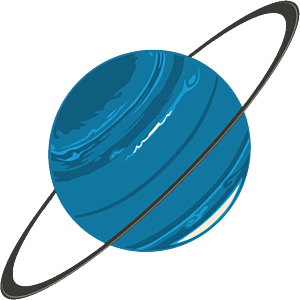The Downlink • Sep 17, 2021
The best seat in the solar system
Space Snapshot

In this image taken by an astronaut aboard the International Space Station in 2018, our planet shines with orange light. This is airglow, a phenomenon that happens in planetary atmospheres. When radiation from the Sun strikes molecules in the atmosphere it energizes them, causing them to release energy that we can see as colors — most commonly red, green or blue, and in this case orange.
You love space, now take action
This weekly newsletter is your toolkit to learn more about space, share information with your friends and family, and take direct action to support exploration. Anyone can subscribe at planetary.org/connect to receive it as a weekly email.
Mission Briefings


NASA’s TESS mission continues to rack up exoplanet discoveries. One of its latest findings is a “super hot Jupiter” that orbits its star backward. Another newly discovered planet orbits both of its suns, crossing in front of both as seen from our solar system. As of Sept. 14, NASA’s exoplanet dashboard lists 4,516 confirmed exoplanets. Pictured: The southern sky as seen by TESS, created from 208 images taken during the mission’s first year of operations. Image credit: NASA/MIT/TESS.

The first-ever crew of non-governmental astronauts will soon return to Earth. The Inspiration4 mission launched safely into orbit aboard a SpaceX Dragon crew capsule on Wednesday and is expected to return after three days in space. Counting the astronauts aboard the International Space Station and China’s new space station — who were scheduled to return to Earth on Friday morning just before the Downlink published — there were briefly 14 people in orbit, setting a new record.

Two crew members on the International Space Station will end up staying aboard for nearly a full year. NASA astronaut Mark Vande Hei and cosmonaut Pyotr Dubrov, who launched in April 2021, will now remain in space until March 2022. They will swap their original spacecraft seats home with a Russian director and actor filming a movie aboard the station next month. Vende Hei will become the new record holder for the longest U.S. spaceflight at 353 days, beating out Scott Kelly, who spent 340 days in space in 2015 and 2016.

Meanwhile at the ISS, two astronauts conducted a spacewalk to prepare for the installation of new solar arrays. Astronauts Akihiko Hoshide of the Japan Aerospace Exploration Agency and Thomas Pesquet of the European Space Agency installed a support bracket for the third array as part of an effort to ensure the station has enough power for a new generation of technology demonstrations and commercial activities.

NASA awarded five companies new contracts to work on lunar lander concepts for the agency’s Artemis program. Among the winning companies is SpaceX, which previously won a separate award to conduct a test flight of its Starship vehicle to the lunar surface, and Blue Origin, which is suing NASA over that same award.
From The Planetary Society


Saturn’s moon Titan is what science fiction dreams are made of. With its hydrocarbon lakes, icy mountains and thick atmosphere, it’s a world hiding many secrets — perhaps even life. Morgan Cable of NASA’s Jet Propulsion Laboratory joins this week’s Planetary Radio to talk about this possibility, as well as her research on another potentially habitable Saturnian moon: Enceladus. Plus, hear the inspiring story of how people’s passion for the Hubble space telescope saved the mission from cancellation. Pictured: In this image from NASA's Cassini spacecraft, you can see lakes filled with liquid hydrocarbons beneath the atmosphere of Titan. Image credit: NASA et al.

Korea is heading for the Moon, with big plans for the future. Learn everything you need to know about the Korean Pathfinder Lunar Orbiter, or KPLO, which will launch in 2022. Equipped with four Korean-built instruments and a NASA-provided camera, KPLO will show us new views of the Moon’s surface and help plan future missions there, including landing humans on its poles.
What's Up

After sunset, look for Venus to the west and Jupiter and Saturn to the east, all shining brightly. Uranus is now at opposition, but even at this most visible point, you’ll still need a sky chart and binoculars or a telescope to find this extremely dim planet. Learn more at planetary.org/night-sky.
See the world as you watch the skies

Your travel dreams are about to come true. Join expert guides and fellow space enthusiasts on a thrilling Planetary Society adventure with Betchart Expeditions. See the aurora from Alaska, a lunar eclipse from Hawaii, the dark skies in Arizona, a total solar eclipse from Antarctica, and much more. A trip with Betchart Expeditions is the adventure of a lifetime and supports The Planetary Society’s mission to advance space science and exploration.
Wow of the Week

No need for a magazine — the four civilian astronauts who flew on SpaceX's Inspiration4 mission this week had an unparalleled view from the spacecraft’s toilet. Although the Dragon capsule Resilience’s specifications were not made public by SpaceX, billionaire Jared Isaacman, who paid for the flight, said that the capsule’s toilet is located very close to the cupola, a glass dome giving 360-degree views of Earth and space. Pictured: Inspiration4 crew member Sian Proctor looking through the cupola on Earth. Image credit: SpaceX.
We love to feature space artwork in the Downlink. If you create any kind of space-related art, we invite you to send it to us by replying to any Downlink email or writing to [email protected]. Please let us know in your email if you’re a Planetary Society member!


 Explore Worlds
Explore Worlds Find Life
Find Life Defend Earth
Defend Earth


